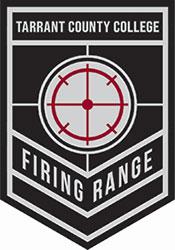Shooting ranges are dynamic and high-impact environments where firearms are discharged regularly. Whether for sport, training, or recreational shooting, the importance of safety and hygiene cannot be overstated. One essential aspect of maintaining a safe and enjoyable shooting experience is shooting range cleaning. This article explores the crucial role that cleaning plays in upholding safety standards and preserving hygiene in shooting ranges.Shooting Range Cleaning
Safety First
Safety is paramount in any shooting range. Proper maintenance and cleaning are fundamental to ensuring that the range remains a safe environment for shooters, range staff, and visitors. Here's why shooting range cleaning is of utmost importance:
1. Lead Contamination: Firing firearms produces lead dust and fragments, which, if not properly managed, can pose serious health risks. Cleaning helps mitigate the buildup of lead contamination on surfaces and in the air.
2. Malfunctions and Accidents: Neglected cleaning can lead to equipment malfunctions, causing accidents and injuries. Regular cleaning and maintenance help prevent such incidents.
3. Fire Hazards: Residues from burned gunpowder can accumulate over time and become fire hazards. Thorough cleaning minimizes the risk of fires within the range.
4. Hygiene and Health: Maintaining cleanliness in common areas, such as restrooms and lounges, is essential for the well-being and comfort of shooters and staff.
Cleaning Best Practices
Shooting range cleaning involves a series of best practices to ensure the safety and hygiene of the facility:
1. Lead Contamination Management: Lead dust and fragments must be safely removed and disposed of to prevent contamination. Professional cleaning services often specialize in lead remediation, reclaiming spent lead projectiles for recycling.
2. Ventilation System Cleaning: Proper ventilation is essential for maintaining air quality and controlling lead dust. Regular cleaning and maintenance of ventilation systems prevent the buildup of contaminants.
3. Range Surface Cleaning: All surfaces within the range, including floors, walls, shooting stalls, and target carriers, must be regularly cleaned to remove lead and gunpowder residues.
4. Target Maintenance: Targets should be inspected and replaced as needed to ensure they function correctly. Clean, well-maintained targets contribute to a better shooting experience.
5. Common Area Cleaning: Areas like restrooms, lounges, and waiting areas should be regularly cleaned to maintain a clean and hygienic environment for shooters and visitors.
6. Range Equipment Inspection: Regular inspection of equipment, such as bullet traps and safety barriers, helps identify and address any issues promptly.
Professional Cleaning Services
Professional shooting range cleaning services offer expertise and specialized equipment for effective cleaning and maintenance. These services often include lead reclamation, ventilation system cleaning, surface cleaning, and equipment inspections. Range operators can benefit from outsourcing these tasks to professionals who understand the unique cleaning requirements of shooting ranges.
Conclusion
Maintaining safety and hygiene in shooting ranges is a shared responsibility among range operators, staff, and shooters. Shooting range cleaning is a vital component of this responsibility. By prioritizing regular cleaning and maintenance, shooting ranges can provide a safe, healthy, and enjoyable environment for all participants. Additionally, proper cleaning practices contribute to responsible environmental stewardship by managing lead contamination and preventing safety hazards. In the world of firearms, safety and hygiene should always come first, and shooting range cleaning plays an indispensable role in upholding these principles.
